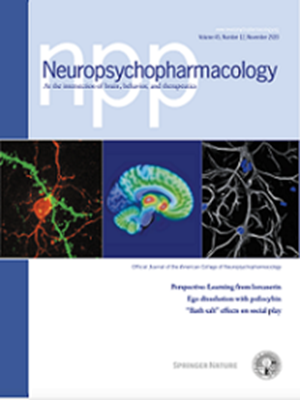与压力相关的遗传因素改变了社会经济地位对心血管风险的影响。
IF 6.6
1区 医学
Q1 NEUROSCIENCES
引用次数: 0
摘要
较低的社会经济地位(SES)和较高的神经质多基因风险评分(NEU-PGS)与心血管疾病(CVD)相关。慢性应激通过激活神经、自主神经和免疫途径增加心血管疾病的风险。我们评估了1)较高的NEU-PGS是否会强化较低SES与主要不良心血管事件(MACE)之间的关联;2)应激相关神经活性和c反应蛋白升高以及心率变异性降低有助于高NEU-PGS患者的SES-MACE关联。NEU-PGS(来自欧洲血统的人)和SES数据来自麻省总医院布里格姆生物银行的个人。社会经济状况以家庭收入中位数(N = 18,093)和地区剥夺指数(ADI, N = 15,276)进行评估。较低的家庭收入被定义为最低分位数,较高的家庭收入被定义为最高分位数。NEU-PGS按人口中位数分层。根据临床数据评估MACE、应激相关神经活动、心率变异性和c反应蛋白。在NEU-PGS较高(但不较低)的个体中,与MACE相关的家庭收入较低(N = 6,574;OR: 1.22, p = 0.005),与压力相关的神经活动(N = 480;标准化β: 0.14, p = 0.003)和心率变异性(1361;-0.05, p = 0.041)。较高的ADI与MACE相关(5,441;1.24, p = 0.008)和心率变异性(1,127;-0.09, p = 0.001),在NEU-PGS较高(但不较低)的患者中。在nue - pgs组中,较低的SES与较高的c反应蛋白相关。应激相关神经活动、心率变异性和c反应蛋白在SES-MACE关系中的中介作用被较高的NEU-PGS所调节。具有较高NEU-PGS的个体通过神经、自主神经和免疫机制的改变,经历与较低SES相关的更大的心血管疾病风险。本文章由计算机程序翻译,如有差异,请以英文原文为准。

Stress-related genetic factors modify the effect of socioeconomic status on cardiovascular risk
Lower socioeconomic status (SES) and higher neuroticism polygenic risk score (NEU-PGS) associate with cardiovascular disease (CVD). Chronic stress increases CVD risk via activation of neural, autonomic, and immune pathways. We evaluated whether 1) higher NEU-PGS accentuates the association between lower SES and major adverse cardiovascular events (MACE); and 2) higher stress-associated neural activity and C-reactive protein and lower heart rate variability contribute to the SES-MACE link among those with higher NEU-PGS. NEU-PGS (from those with European ancestry) and SES data were derived from individuals in the Mass General Brigham Biobank. SES was assessed as median household income (N = 18,093) and area deprivation index (ADI, N = 15,276). Lower household income was defined as the lowest tertile and higher ADI as the highest. NEU-PGS was stratified about the population median. MACE, stress-associated neural activity, heart rate variability, and C-reactive protein were assessed from clinical data. Among individuals with higher (but not lower) NEU-PGS, lower household income associated with MACE (N = 6,574; OR: 1.22, p = 0.005), stress-associated neural activity (N = 480; standardized β: 0.14, p = 0.003), and heart rate variability (1,361; −0.05, p = 0.041). Higher ADI associated with MACE (5,441; 1.24, p = 0.008) and heart rate variability (1,127; −0.09, p = 0.001) among those with higher (but not lower) NEU-PGS. Lower SES associated with higher C-reactive protein across NEU-PGS groups. The mediating effect of stress-associated neural activity, heart rate variability and C-reactive protein in the SES-MACE relationship was moderated by higher NEU-PGS. Individuals with higher NEU-PGS experience greater CVD risk related to lower SES via alterations in neural, autonomic, and immune mechanisms.
求助全文
通过发布文献求助,成功后即可免费获取论文全文。
去求助
来源期刊

Neuropsychopharmacology
医学-精神病学
CiteScore
15.00
自引率
2.60%
发文量
240
审稿时长
2 months
期刊介绍:
Neuropsychopharmacology is a reputable international scientific journal that serves as the official publication of the American College of Neuropsychopharmacology (ACNP). The journal's primary focus is on research that enhances our knowledge of the brain and behavior, with a particular emphasis on the molecular, cellular, physiological, and psychological aspects of substances that affect the central nervous system (CNS). It also aims to identify new molecular targets for the development of future drugs.
The journal prioritizes original research reports, but it also welcomes mini-reviews and perspectives, which are often solicited by the editorial office. These types of articles provide valuable insights and syntheses of current research trends and future directions in the field of neuroscience and pharmacology.
 求助内容:
求助内容: 应助结果提醒方式:
应助结果提醒方式:


